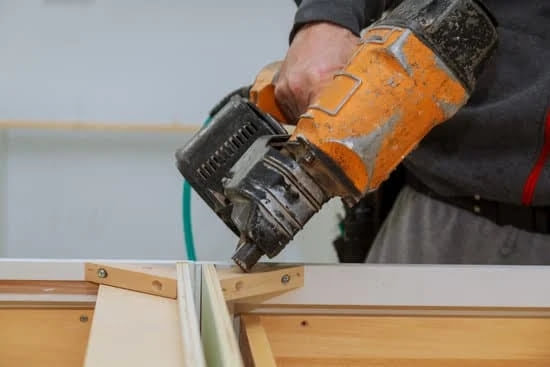A quality chisel set for woodworking is an essential tool for any woodworker, whether you are a beginner or a seasoned professional. Having the right set of chisels can make a significant difference in the quality and precision of your work. From carving intricate designs to creating smooth and clean cuts, a reliable chisel set is indispensable in woodworking projects.
When it comes to choosing the best chisel set for woodworking, there are various types available in the market, each designed for specific tasks and applications. Understanding the importance of investing in a high-quality chisel set is crucial in achieving excellent results and ensuring the longevity of your tools.
In this article, we will explore the different types of chisel sets for woodworking, factors to consider when choosing the right set for your needs, as well as tips on proper care and maintenance to prolong their lifespan. Additionally, we will also cover must-have accessories that complement chisel sets and provide versatility in various woodworking projects.
Lastly, we will delve into DIY projects and tutorials using chisel sets to inspire and guide you in unleashing your creativity with these versatile tools.
Types of Chisel Sets for Woodworking
When it comes to woodworking, having the right tools is crucial to achieving the best results. One of the most essential tools for any woodworker is a chisel set. However, not all chisel sets are created equal, and there are different types to choose from depending on the specific woodworking tasks you will be undertaking.
The first type of chisel set for woodworking is the bench chisels. These are versatile chisels that can be used for various woodworking tasks such as paring, chopping, and carving. Bench chisels come in different sizes and are usually made of high-quality carbon or stainless steel for durability and precision.
Another type of chisel set is the mortise chisels. These chisels are specifically designed for cutting mortises and can withstand the heavy blows required for this task. Mortise chisels typically have thick blades and sturdy handles to handle the rigors of mortise cutting.
Next, we have pairing chisels which are thinner and lighter than bench chisels. These are ideal for delicate trimming and shaping work where precision is crucial. They are especially useful for cleaning out joints and making small adjustments to a workpiece. Pairing chisels come in handy when fine-tuning dovetail joints or other intricate woodworking details.
| Type of Chisel Set | Primary Use |
|---|---|
| Bench Chisels | Paring, chopping, carving |
| Mortise Chisels | Cutting mortises |
| Pairing Chisels | Delicate trimming, shaping work |
Overall, the type of chisel set you choose will depend on the specific woodworking tasks you need it for. It’s important to invest in high-quality chisel sets that suit your needs when working with wood to ensure precise cuts and a professional finish to your projects.
Factors to Consider When Choosing a Chisel Set
When it comes to choosing a chisel set for woodworking, there are several important factors to consider. The right chisel set can make a significant difference in the quality of your woodworking projects, so it’s essential to make an informed decision. Here are some key factors to keep in mind when selecting a chisel set for your woodworking needs:
- Quality of the Blades: One of the most critical factors to consider when choosing a chisel set is the quality of the blades. High-quality blades made from durable materials such as high carbon steel or chromium-vanadium alloy will hold their edge longer and provide cleaner cuts.
- Types of Chisels Needed: Different woodworking projects require different types of chisels. It’s essential to consider the variety of chisels included in a set and ensure that it meets your specific project needs. Common types of chisels include bench chisels, mortise chisels, pairing chisels, and bevel edge chisels.
- Handle Design and Comfort: Comfort and ergonomics are crucial when selecting a chisel set. Look for sets with comfortable handles that provide a secure grip, reducing hand fatigue during extended use.
Considering these factors will help ensure that you choose a high-quality chisel set for woodworking that meets your specific project requirements. Investing in a reliable chisel set will not only improve the quality of your work but also enhance your overall woodworking experience.
Proper Care and Maintenance of Chisel Sets
Cleaning and Sharpening
One of the most important aspects of caring for your chisel set for woodworking is keeping the tools clean and sharp. After each use, it’s crucial to remove any wood residue or debris from the blades. This can be done with a cleaning brush or a rag.
Additionally, regular sharpening is essential to maintain the precision and effectiveness of your chisels. Investing in a high-quality sharpening stone or honing guide will ensure that your chisels remain in top condition.
Proper Storage
To prevent damage to your chisel set, proper storage is key. When not in use, it’s important to store them in a dry environment and away from any moisture. Many woodworkers choose to store their chisels on a magnetic tool holder or within a dedicated chisel roll to keep them organized and protected.
Rust Prevention
Another important aspect of maintaining chisel sets for woodworking is preventing rust. To protect your tools from rusting, it’s recommended to apply a thin layer of oil or wax to the blades after each use. Additionally, storing them in a dry space will help prevent rust from forming.
By following these care and maintenance tips, you can ensure that your chisel set for woodworking will last for many years while remaining sharp and effective.
Must-Have Accessories for Chisel Sets
If you’re serious about woodworking, then you know that having the right chisel set for woodworking is essential. But it’s not just about having the chisels themselves; there are several accessories that can enhance your woodworking experience and help you achieve more precise and professional results.
One must-have accessory for your chisel set is a sharpening stone or honing guide. Keeping your chisels sharp is crucial for maintaining their effectiveness and precision. A sharpening stone will allow you to easily keep your chisels in top condition, while a honing guide can help ensure that you maintain the correct bevel angle while sharpening.
Another important accessory to consider is a mallet. While it’s possible to use a hammer with your chisels, a mallet specifically designed for woodworking will provide better control and reduce the risk of damaging your chisels. Look for a mallet made of wood or rubber, as these materials are less likely to cause any unintended damage.
Finally, a sturdy and reliable workbench is an essential accessory for using your chisel set. A good workbench will provide stability and support while you work, allowing you to focus on your woodworking without having to worry about the bench moving or wobbling. Additionally, some workbenches come with built-in clamps or vises, which can be extremely useful when securing your projects in place while working with your chisels.
By investing in these essential accessories for your chisel set, you can improve the quality of your woodworking projects and ensure that you have the tools and support needed for success.
DIY Projects and Tutorials Using Chisel Sets
In conclusion, a quality chisel set for woodworking is an essential tool for any woodworker, whether you are a beginner or an experienced craftsman. The right chisel set can make all the difference in the outcome of your woodworking projects, allowing for precision and finesse in your work. From carving intricate designs to shaping wood pieces, a chisel set is a versatile tool that every woodworker should have in their arsenal.
When choosing a chisel set for woodworking, it is important to consider factors such as the types of chisels included, the material and construction of the blades, and the overall durability of the set. Proper care and maintenance of your chisel set is also crucial to ensure its longevity and performance. Regular sharpening and honing of the blades, as well as proper storage, will keep your chisels in top condition.
In addition to the chisel set itself, there are various accessories that complement this tool and enhance its functionality. From sharpening stones to mallets and sharpening jigs, these accessories can improve your woodworking experience and help you achieve professional results.
With the right chisel set and accessories, you can embark on DIY projects and tutorials that showcase the versatility and precision of this essential woodworking tool. Whether you are carving intricate details or shaping wood pieces for custom furniture, a quality chisel set is a must-have for any woodworking enthusiast.
Frequently Asked Questions
What Are the Best Wood Chisels for the Money?
The best wood chisels for the money are usually a set of high-quality chisels that offer durability, sharpness, and versatility. Some well-regarded brands include Narex, Stanley, and Two Cherries.
What Kind of Chisel for Woodworking?
For woodworking, the best kind of chisel to use is a beveled edge bench chisel. This type of chisel is versatile and can be used for various woodworking tasks such as carving, shaping, and paring.
What Size Chisels Do I Need for Woodworking?
The size of chisels you need for woodworking depends on the specific tasks you’ll be doing. A good starting point is to have a set of chisels in sizes 1/4 inch, 1/2 inch, 3/4 inch, and 1 inch. This will cover a wide range of woodworking needs from intricate detail work to larger scale tasks.

Hi everyone! I’m a woodworker and blogger, and this is my woodworking blog. In my blog, I share tips and tricks for woodworkers of all skill levels, as well as project ideas that you can try yourself.





